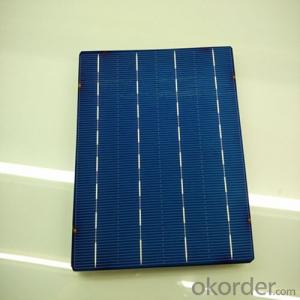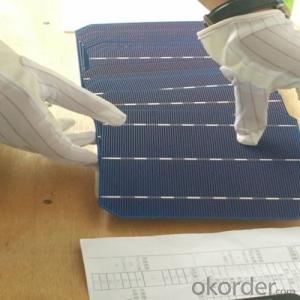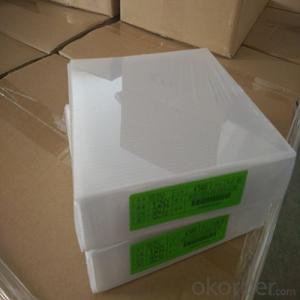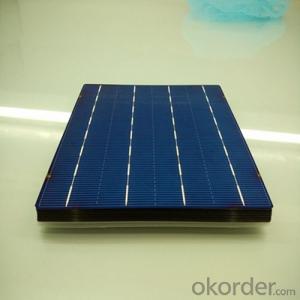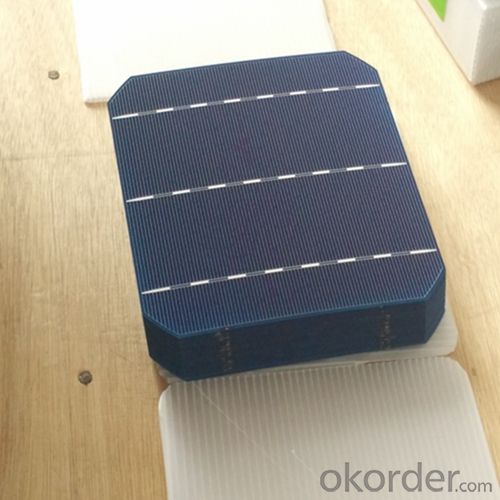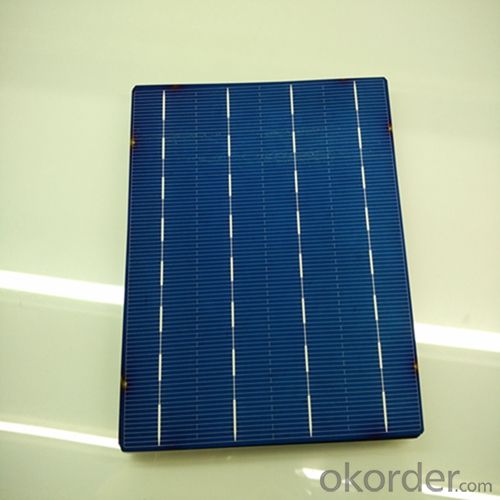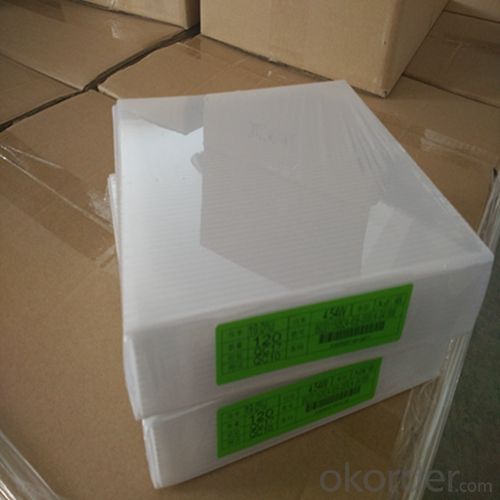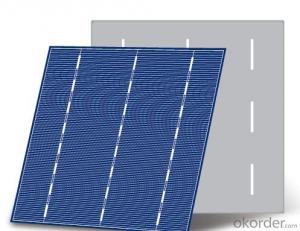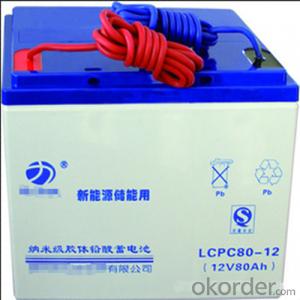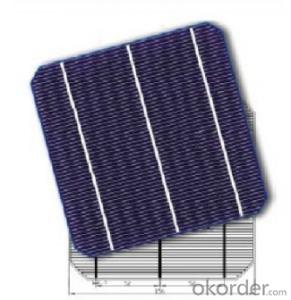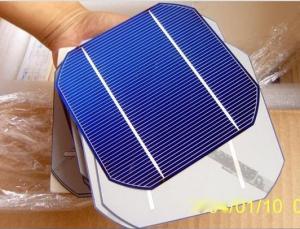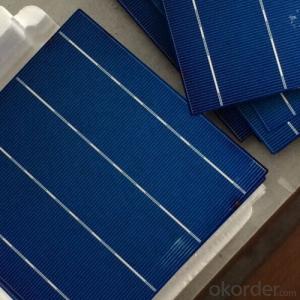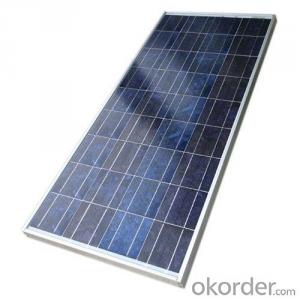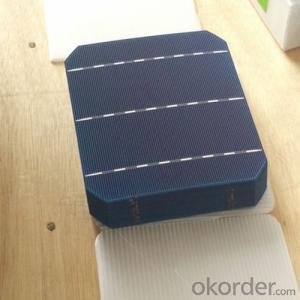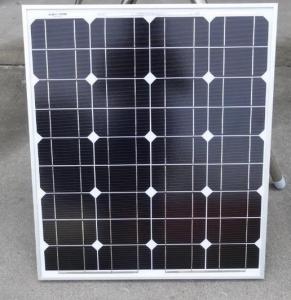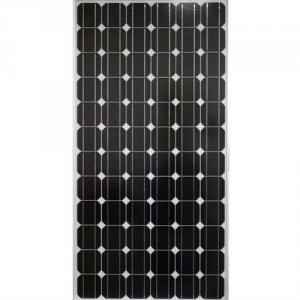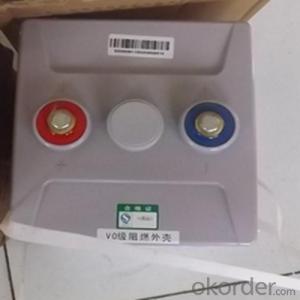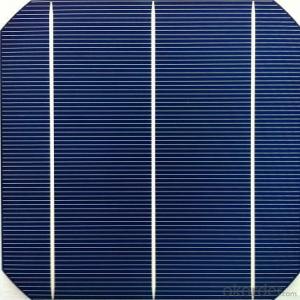Poly 156x156mm2 Solar Cells on Roof - Class A4 Made
- Loading Port:
- Shanghai
- Payment Terms:
- TT OR LC
- Min Order Qty:
- 6000 watt
- Supply Capability:
- 6000000 watt/month
OKorder Service Pledge
OKorder Financial Service
You Might Also Like
The operation of a photovoltaic (PV) cell requires 3 basic attributes:
The absorption of light, generating either electron-hole pairs or excitons.
The separation of charge carriers of opposite types.
The separate extraction of those carriers to an external circuit.
In contrast, a solar thermal collector supplies heat by absorbing sunlight, for the purpose of either direct heating or indirect electrical power generation from heat. A "photoelectrolytic cell" (photoelectrochemical cell), on the other hand, refers either to a type of photovoltaic cell (like that developed by Edmond Becquerel and modern dye-sensitized solar cells), or to a device that splits water directly into hydrogen and oxygen using only solar illumination.Characteristic of Mono 156X156MM2 Solar Cells
You are gaining energy independence - add battery backup power for even greater energy security
The cost of electricity is only going to rise – insure against that rising cost
Adaptive cells change their absorption/reflection characteristics depending to respond to environmental conditions. An adaptive material responds to the intensity and angle of incident light. At the part of the cell where the light is most intense, the cell surface changes from reflective to adaptive, allowing the light to penetrate the cell. The other parts of the cell remain reflective increasing the retention of the absorbed light within the cell.[67]
In 2014 a system that combined an adaptive surface with a glass substrate that redirect the absorbed to a light absorber on the edges of the sheet. The system also included an array of fixed lenses/mirrors to concentrate light onto the adaptive surface. As the day continues, the concentrated light moves along the surface of the cell. That surface switches from reflective to adaptive when the light is most concentrated and back to reflective after the light moves along
Mechanical data and design
Format | 156mm x 156mm±0.5mm |
Thickness | 210μm±40μm |
Front(-) | 1.5mm bus bar (silver),blue anti-reflection coating (silicon nitride) |
Back (+) | 2.5mm wide soldering pads (sliver) back surface field (aluminium) |
Temperature Coefficient of Cells
Voc. Temp.coef.%/K | -0.35% |
Isc. Temp.coef .%/K | +0.024%/K |
Pm.Temp.coef. %/K | -0.47%/K |
Electrical Characteristic
Effiency(%) | Pmpp(W) | Umpp(V) | Impp(A) | Uoc(V) | Isc(A) | FF(%) |
18.35 | 4.384 | 0.526 | 8.333 | 0.63 | 8.877 | 78.39% |
18.20 | 4.349 | 0.526 | 8.263 | 0.63 | 8.789 | 78.54% |
18.05 | 4.313 | 0.525 | 8.216 | 0.63 | 8.741 | 78.32% |
17.90 | 4.277 | 0.524 | 8.161 | 0.625 | 8.713 | 78.04% |
17.75 | 4.241 | 0.523 | 8.116 | 0.625 | 8.678 | 77.70% |
17.60 | 4.206 | 0.521 | 8.073 | 0.625 | 8.657 | 77.36% |
17.45 | 4.170 | 0.519 | 8.039 | 0.625 | 8.633 | 76.92% |
17.30 | 4.134 | 0.517 | 8.004 | 0.625 | 8.622 | 76.59% |
17.15 | 4.096 | 0.516 | 7.938 | 0.625 | 8.537 | 76.80% |
17.00 | 4.062 | 0.512 | 7.933 | 0.625 | 8.531 | 76.18% |
16.75 | 4.002 | 0.511 | 7.828 | 0.625 | 8.499 | 75.34% |
16.50 | 3.940 | 0.510 | 7.731 | 0.625 | 8.484 | 74.36% |
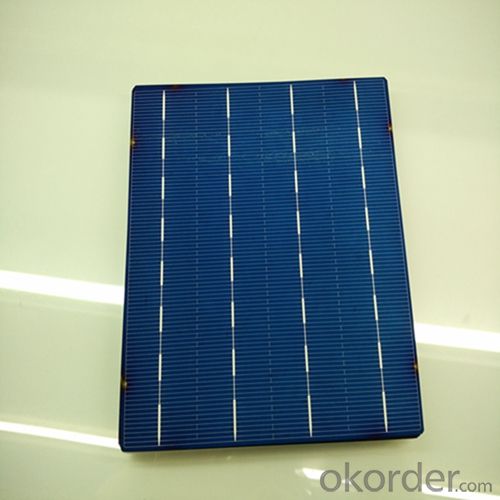
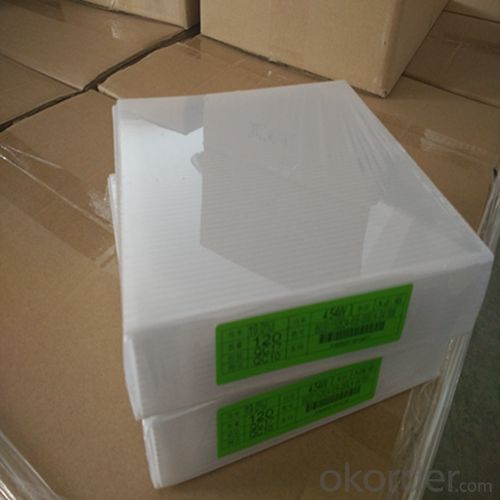
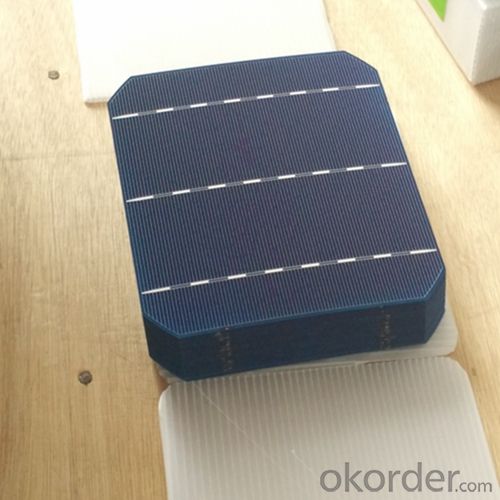
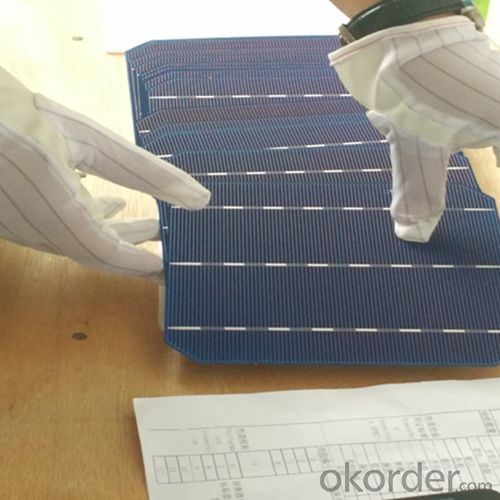
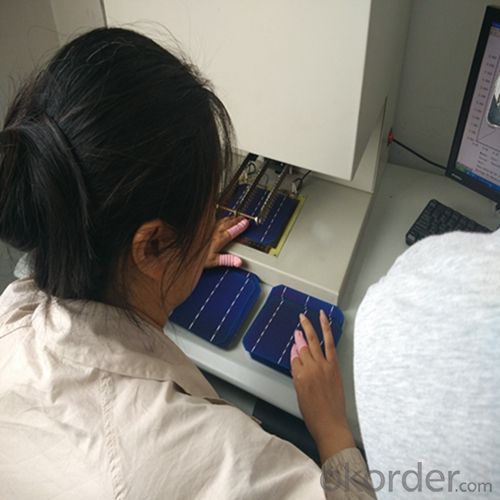 FAQ
FAQ
Q: What price for each watt?
A: It depends on the quantity, delivery date and payment terms, generally Large Quantity and Low Price
Q: What is your size for each module? Can you tell me the Parameter of your module?
A: We have different series of panels in different output, both c-Si and a-Si. Please take the specification sheet for your reference.
Q: What is your size for each module? Can you tell me the Parameter of your module?
A: We have different series of panels in different output, both c-Si and a-Si. Please take the specification sheet for your reference.
- Q: How can I explain to my 10 year old daughter what solar cells are?
- Solar cell are the materials that can transform the sun energy into electricity.
- Q: Can solar cells be used in traffic management systems?
- Yes, solar cells can be used in traffic management systems. They can be utilized to power various components of the system such as traffic lights, sensors, and cameras. Solar cells provide a renewable and sustainable source of energy, reducing the reliance on traditional power sources and helping to reduce carbon emissions. Additionally, solar-powered traffic management systems can be installed in remote areas where access to electricity grids may be limited or non-existent.
- Q: What is the difference between a monocrystalline and polycrystalline solar cell?
- Monocrystalline solar cells are made from a single crystal structure, resulting in a higher efficiency but also higher costs. On the other hand, polycrystalline solar cells are made from multiple crystal structures, making them less efficient but more cost-effective.
- Q: What are thin-film solar cells?
- Thin-film solar cells are a type of photovoltaic technology that use thin layers of semiconductor materials to convert sunlight into electricity. These cells are lightweight, flexible, and can be manufactured using low-cost materials and techniques. They are commonly used in portable electronics, building-integrated photovoltaics, and other applications where traditional solar panels may not be suitable.
- Q: What is the maximum efficiency possible for a solar cell?
- The maximum efficiency possible for a solar cell, based on current technology, is around 44%.
- Q: What is the impact of bird droppings on solar cell performance?
- Bird droppings can significantly impact solar cell performance by reducing the amount of sunlight reaching the surface of the cells. The droppings can act as a physical barrier, blocking sunlight and reducing the efficiency of the solar cells in converting sunlight into electricity. Additionally, the chemical composition of bird droppings can cause corrosion and damage to the surface of the cells, further degrading their performance over time. Regular cleaning and maintenance are essential to ensure optimal solar cell efficiency and prevent any long-term negative impact from bird droppings.
- Q: Silicon solar cell power generation principle
- Refers to the phenomenon of the object due to the absorption of photons and the phenomenon of electromotive force, when the object is subject to light, the object within the charge distribution state changes in the electromotive force and current generated an effect. Strictly speaking, including two types:
- Q: How long do solar cells last?
- Solar cells typically have a lifespan of around 25 to 30 years. However, with proper maintenance and regular cleaning, solar cells can continue to generate electricity for even longer periods.
- Q: Can solar cells power an entire house?
- Yes, solar cells have the potential to power an entire house. With advancements in technology and proper installation of solar panels, it is possible to generate enough electricity to meet the energy needs of a household. However, the feasibility of this depends on various factors such as the size of the solar panel system, the energy consumption of the house, and the availability of sunlight in the area.
- Q: Solar cell life for several years
- A solar cell is a device that converts light energy directly into electrical energy by photoelectric effects or photochemical effects.
Send your message to us
Poly 156x156mm2 Solar Cells on Roof - Class A4 Made
- Loading Port:
- Shanghai
- Payment Terms:
- TT OR LC
- Min Order Qty:
- 6000 watt
- Supply Capability:
- 6000000 watt/month
OKorder Service Pledge
OKorder Financial Service
Similar products
Hot products
Hot Searches
Related keywords

